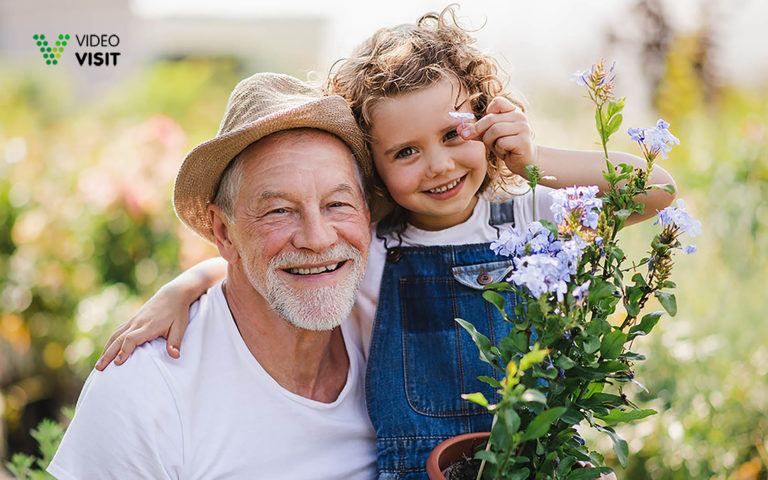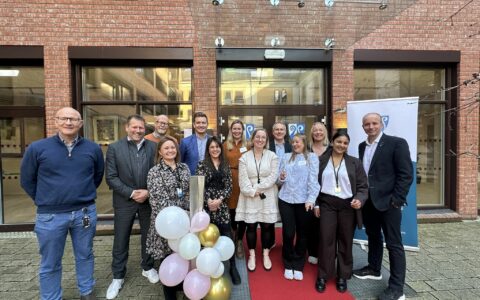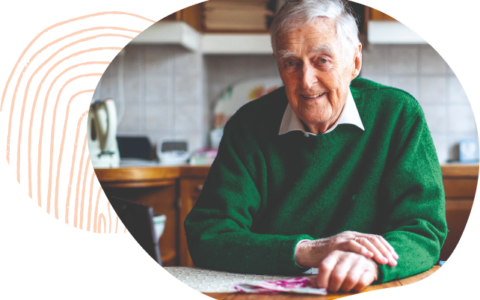
KATARIINA OJALA
The Finnish population is aging at an increasing rate and people live longer at their homes. Home means a lot to elderly people. Home brings joy and security to life. However, as people get older, for example illnesses can cause certain limitations to their ability to function. Supporting living and ensuring care and rehabilitation at home are perceived as important in the society and as a preventive activity.
At home, everyday life intertwines with memories and the past. At home, one is able to live their life the way they want to, based off their own capabilities and skills. Living at home supports elderly people’s overall well-being, maintains their ability to function, gives more of a meaning to life and brings happiness. Most of the people would prefer to live at home as long as possible.
Content and activities at home via video connection
The goal of virtual care is to enable people living at home as long as possible. It makes it possible to easily offer a variety of services to the elderly. Virtual care via video connection enables for example, remote visits, individual and group rehabilitation sessions and social connecting such as enjoying a cup of coffee with someone. Virtual care services provide a way to for example, monitor taking medicine, guide eating and perform different types of rehabilitation exercises.
”Familiar environment supports the ability to function and independent living. Routines in particular can support coping even when an illness progresses. Changes in environment may be confusing, decrease independent initiative and activity, and increase the feeling of insecurity. Therefore, care and rehabilitation should be arranged at home and in a way that it supports living at home as long as possible.” (Muistiliitto Ry, 2021)
Gerotechnology to become a normal part of social and health services
The Ministry of Social Affairs and Health (2020) has outlined as one of the national objectives that by 2030 smart technology supporting independent living will have increased the well-being of elderly people and that everyone will have equal opportunities to apply these technological solutions.
”In the coming years, the aging population will be more accustomed to using technology, which allows existing and new technology to be used more extensively. Technology can be diversely utilised in the services for older people and in preventive activities.”
(National Programme on Aging 2030: For an age-competent Finland; Publications of the Ministry of Social Affairs and Health 2020:3).
Gerotechnology should be seen as an enabler that creates new ways of doing things in the lives of the elderly. It broadens the world and increases happiness. Technology creates new ways to function as it allows the elderly to become a more meaningful part of the modern society and participate in various events. Therefore, gerotechnology increases activity and sociability.
Presence and real connections for the elderly through virtual home care
A client that is in virtual home care can participate in for example, various physical exercise sessions and social chatting with a cup of coffee via video connection. By using the same tablet, the client receives care and treatment at home and is able to stay connected with their family and friends via video connection.
According to user experiences, virtual care is perceived as even more meaningful than traditional home care visits. The fact that the caregiver is not in a rush and is truly present in the virtual encounter is a valuable experience to the elderly person living at home. Regular meetings with the same caregiver also create stability and increase the feeling of security. These moments often become one of the most anticipated events of the day and are extremely important to the home care client.
The use of technology creates the joy of success and meaningful experiences
Using technology is not an age-related act. It is essential that the device and services that are selected for the elderly person to use meets their needs, are easy to use and secure.
It is often thought that elderly people are unable to use technological solutions because devices are too complex or they do not have the necessary skills or understanding. In reality, many elderly people are curious and willing to try and learn something new. For example, the VideoVisit® tablet that has been specifically developed for virtual care, has been proven to increase the client’s sense of pride and self-efficacy, joy of success and the meaning of life. The only thing that the client needs to do is arrive in front of the device as it rings. Using technology is not an age-related act. It is essential that the device and services that are selected for the elderly person to use meets their needs, are easy to use and secure.
Prejudice about gerotechnology may come from elderly people’s relatives or social and health service professionals. This slows down the implementation of gerotechnology and its development. Changing one’s own prejudice and ways of thinking enables new ideas and insight. We are able to create more valuable and happier lives and futures for those close to us when we are open and curious about new ways of doing things and understand the possibilities technology can create when it comes to supporting living at home.
References
National Programme on Aging 2030: For an age-competent Finland; Publications of the Ministry of Social Affairs and Health 2020:3.



